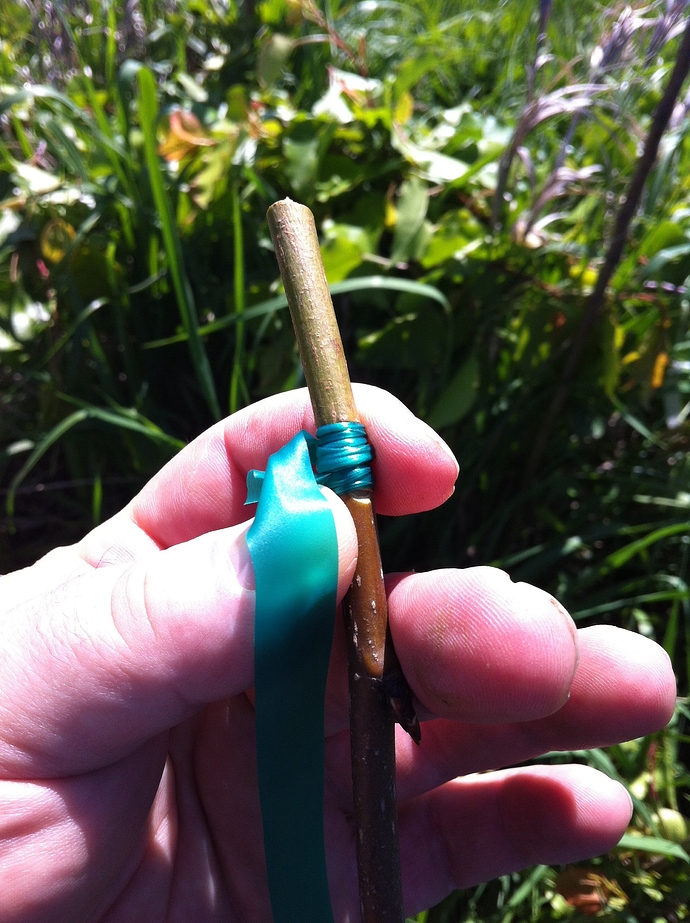Started a Stool bed of callery once without realizing they were the hardest wild callery to graft I’ve ever found. That problem I accidentally created myself years ago has a few remnants left behind to remind me of my mistake. The yellow pear I grow is so easy to graft it practically grafts to an elm tree so in this case I use it as an interstem. A generous forum member who’s name I won’t mention sent me a few pear scions we will call Unknown, Parker, and Lincoln for which I decided to use on these vigorous seedlings. These seedlings can grow several feet per year which is why I selected them many years ago not realizing they were a son of a gun to graft. See the pictures below and then ofcouse I wrapped the entire area with parafilm. If you want to learn more about interstems see this post Interstem aka interstock Pear Grafting
2 Likes

